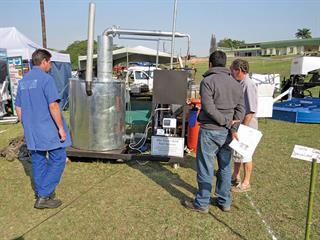At the recent wool auction in Port Elizabeth, the Merino indicator came under pressure although quality wools were still keenly sought after.
The indicator closed the day down by 0,6% at R103,39/kg (clean) with 9 240 bales offered and 95% of them sold, according to Cape Wools spokesperson Ona Viljoen.
Henning van der Merwe of BKB’s fibre marketing division noted that its Merino wool indicator ended 65% higher than the comparative sale a year ago, while the rand had appreciated by 12% against the US dollar over the same period.
James de Jager, manager of wool at CMW, said all buyers competed briskly. Bennie Philips achieved the top price of R106/kg for a lot of 17,3 micron ANKS. “The short supply situation should support the market at least until the end of the year,” he said. “The Australian National Forecast Committee has released figures indicating Australian wool production grew 3% this season, but this comes from a very low base and shouldn’t affect the market, especially as no further growth is foreseen over the next month.”
The rand gained 1,2% on a weekly basis against both the US dollar and euro to close at R7,85/US$1 and R10,82/€1, said Cape Wools. The average clean price for the different categories good top-making (MF5), sound, long fleeces (less than 1% seed content) were: 19 microns fell 2,5% to R119,93/kg; 19,5 microns were 1,9% down at R116,10/kg; 20 microns dropped 1,9% to R112,36/kg; 20,5 microns were down 1,5% at R110,59/kg; 21 microns fell by 1% to close at R107,85/kg; 21,5 microns dropped 1,3% to R104,70/kg; and 22 microns fell 1,1% to R100,91/kg. – Roelof Bezuidenhout










